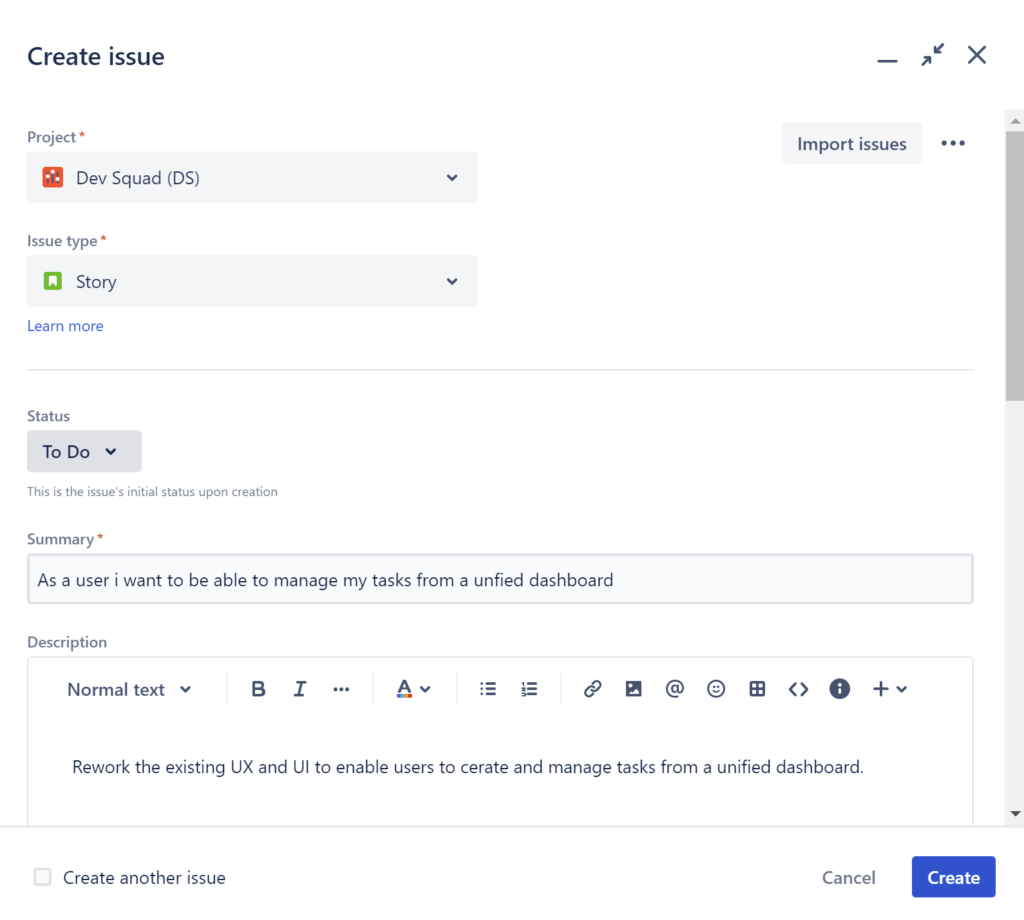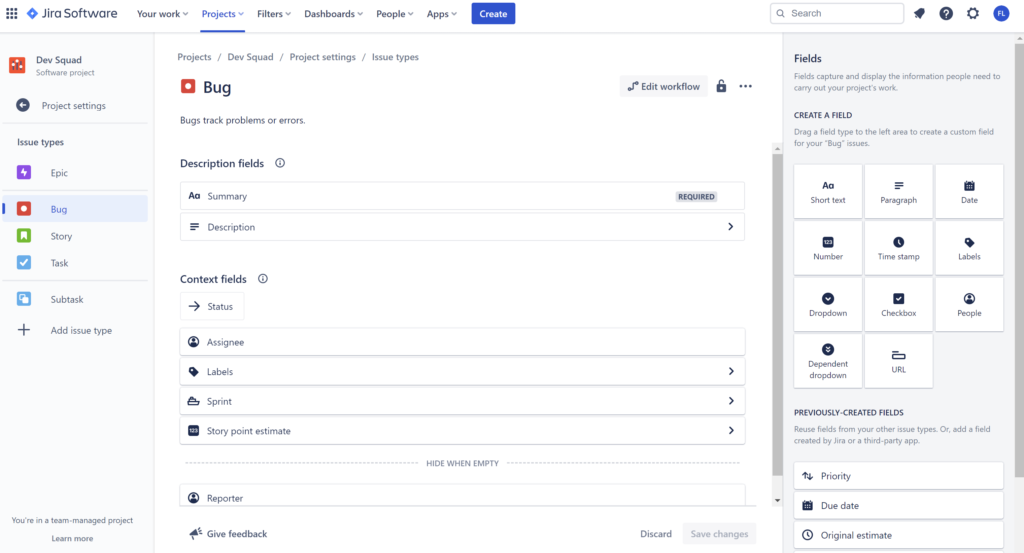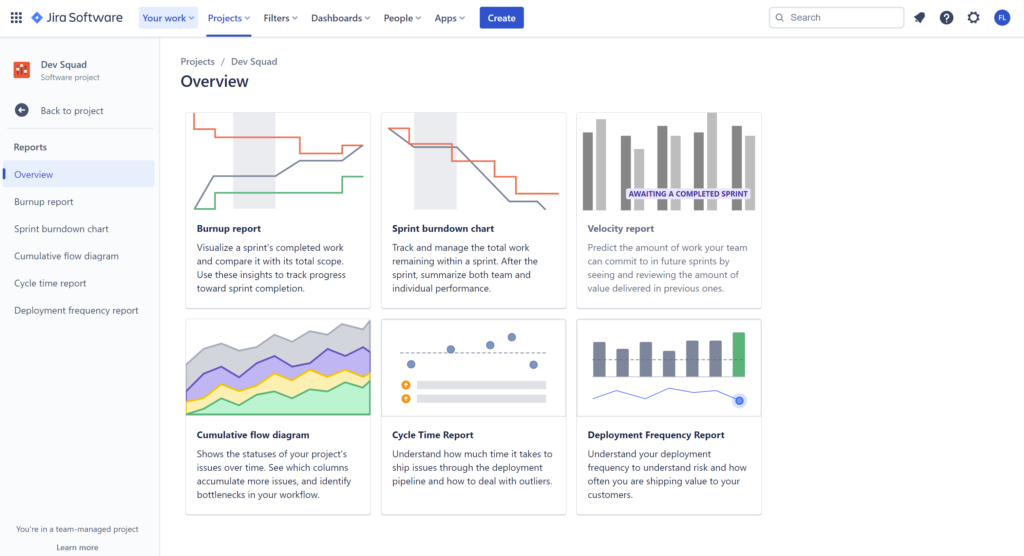I remember when I first joined Vectors, I was kind of overwhelmed with everything going on within Jira. While Jira wasn’t excessively complicated, its new concepts and key terms were somewhat confusing.
If you are considering using Jira in the future or if you are just getting started, then this article is for you. We are going to explore the concepts Jira is based on and walk through a couple of key terms that you should know upon starting.
But first… What is Jira?
Atlassian developed Jira as a Project Management toolset. Initially, they developed and marketed it for software development teams as a bug tracking tool. The platform grew in popularity over the years and started to reach more and more teams and cover multiple use cases through platforms such as Jira Service Management, Jira Work Management and Jira Align. Today, Jira positions itself as a project management suite for all teams designed to enhance processes, manage workloads, generate timely reports and track issues.
Jira Concepts and Terminology
Jira Issues
Let’s start with the elephant in the room and perhaps the most important yet confusing concept that Jira is based on (at least for me when I started). Jira issues represent basic pieces of work that teams can create and track over time. Issues can range from simple tasks and feature requests to bugs and product defects. For example, an issue for a software development team can be “a new feature request” whereas for a marketing team, an issue may represent a blog article or social media copy.

Issue Types & Hierarchy
Issue types are designed to help teams organize and categorize the issues they have created. This makes issues easier to locate, access and track across a Jira instance. Jira comes with a set of pre-defined issue types based on popular software development methodologies such as Scrum and Kanban.
It is important to understand issue hierarchy or the concepts of parent and child issues. Parent issues stand at the top and typically incorporate other issues. For example, an epic may consist of multiple stories. Child issues on the other hand belong to other issues above them. For example, a subtask belonging to a story. A sub-task sits at the bottom of Issue Types pyramid, so it cannot include other child issues.
Now let’s explore each issue type in further detail.
- Epics: An epic represents a large piece of work that can be divided into multiple child issues. For software development teams, an epic can be a new feature they are working on whereas for a marketing team an epic can be a social media campaign.
- Stories: A story is a standard issue or a single piece of work that if grouped with other stories will constitute an epic. As their name implies, stories provide a general explanation of the project end-goal from the end-user perspective. It is common practice within Agile teams especially when developing new features.
- Bugs: A bug is a deficiency or flaw that prevents the product from functioning properly. Jira users group the bug issue type under an epic to provide further description of the issue at hand.
- Sub-tasks: A further decomposition of stories into more specific, targeted and daily tasks.

👉 Learn more about Jira Issue Types Here: http://bitly.ws/FcZf
Jira Workflows
Jira workflows represent the path issues follow from creation to completion. The workflow is made of statutes and transitions that are fully customizable. Teams can introduce and integrate new steps to the workflows and edit it within Jira to reflect their business processes. “To do, In progress and done” is a simple example of a Jira workflow. Each issue entering the workflow will be associated with one of the three statutes. You need to create a transition to move from one status to the next.
Jira Projects
Now that you have an idea of what issues are and their various types, let’s dig deep into the concept of projects within Jira. Projects represent a large collection of issues grouped together to achieve common goals and objectives. Generally speaking, teams using Jira often create projects per department, team, product or any large initiative specific to their business. Jira offers various types of project templates that tailor to any team’s processes, including Scrum, Kanban, and others. We can break down a typical Jira project as follows: Project > Epic > Story > Sub-task.

Jira Components
Components are effective to streamline projects and further divide them into functional sub-sections. Think of components as containers that can group Jira issues and make them easily accessible via a dedicated page. There, components are shown in further detail including Name, Description, Lead, Default assignee and Associated issues.
Jira Labels
Labels are specific tags and keywords that can be associated with Jira issues. It is a convenient way to classify similar issues that don’t belong to the same epic or story. This makes it easier for teams to search and locate issues across their Jira instance. For example, software development teams can associate the “Ready-for-UAT” label to indicate that a feature is ready for the UAT phase of a given project.
Jira Boards
Teams using Jira can visualize and track issues within native and fully customizable Jira boards. Boards are part of the chosen project template. There are Scrum boards for teams planning their work in sprints, or Kanban boards for teams focusing on simple workflows and capacity. Any given Jira project can have one or a combination of boards depending on the teams’ preferences and scope of work.

Jira Reports
Reports within Jira are crucial to help teams keep track of their projects, manage workloads, prioritize tasks, identify bottlenecks and predict future performance. We can identify four Jira reports including: Reports for Scrum teams, reports for Kanban teams, Forecast and management and Issue analysis.
Each type contains multiple reports giving teams rich and detailed insights. For example Scrum reports include Sprint Report, Burndown/up Chart, epic report etc. Kanban reports consist of a Cumulative Flow Diagram and a Control Chart.

👉 Dig Deeper into Jira Reports with our article
Adapting to a new software, especially one as large and complex as Jira, can feel overwhelming at first. Stay tuned! As we uncover more about Jira. In upcoming blog posts, we will explore more Jira concepts and features in further detail.
👉 Check out our Blog for more insights on Jira products.